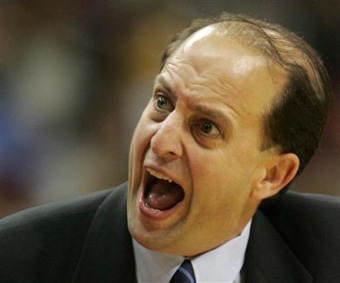 ON TENNIS
ON TENNISGenerally, I regard my weekends as a chance to live a normal schedule, an opportunity to hit the sack before 3 in the morning.
As someone who works overnight shifts during the week, I consider my Friday, Saturday and Sunday nights as go-to-bed-before-the-sun-rises nights.
That likely won't happen tonight.
Not when Rafael Nadal and Roger Federer are exchanging ground strokes and scintillating rallies Down Under. After having to watch their last grand-slam final — remember that five-setter at Wimbledon? You know, the greatest match of all time — on the day after it went down, there's no way I won't catch this battle of the titans live.
If the final pitted, say, Novak Djokovic and Andy Murray, watching it a day later during normal-people hours wouldn't be a problem. But there are certain athletes competing in certain events that take competition to another level.
The obvious one is Tiger Woods.
When Woods is in contention at a major, it's can't-miss television. Will Tiger hold on? Will Tiger finally come back and win one? What amazing, you-gotta-be-kidding-me shot will Tiger put in the hole?
There is great drama and intrigue when the sport's greatest player is roaming the course with fire in his eyes.
Rich Beem and Jim Furyk don't create that kind of excitement.
The same electricity is in the air when Federer and Nadal take the court in a grand-slam final, as will be the case for the seventh time tonight/tomorrow in Melbourne. (Nadal has won four of the six.) The intensity is ratcheted up and, most important, the quality of play on both sides of the net can't be matched by any other combination of players.
They're so evenly matched, any break of serve is seen as a huge advantage. And yet as predictable as a match can get — service games are won, the players go back and forth — a Federer-Nadal match never gets boring, never becomes mundane because you never know what they'll pull out of their trick bags.
On one point, it might be Nadal curving an impossible-looking forehand up the line. On the next point, it could be Federer lacing one of his impeccable one-handed backhands past a charging Nadal.
You never know what's going to happen each point. You can never count out either player because of their in-a-class-of-their-own ability and unbreakable confidence. How else can one explain Federer coming back from two sets down to beat Nadal in back-to-back tiebreaks and take that memorable Wimbledon match to a fifth set?
These factors combine to make Nadal-Federer can't miss television. But there's another reason to skip sleeping for watching these two battle inside Rod Laver Arena.
They won't be around forever.
Just like the PGA must dread the day when Tiger leaves, the men's tennis world can't be looking forward to Federer's retirement — which is probably within five years.
Sure, there are plenty of up-and-coming talented young players today — such as Djokovic and Murray — and Nadal, just 22, will be around for several years to come. But unlike in golf, riveting tennis requires two players to concoct a rivalry such as the one Federer and Nadal have created.
So once Federer has eclipsed Pete Sampras' record of 14 grand-slam titles — he can tie it tonight — and decided to move on to life's other treasures, this era of men's tennis will likely never be the same.
We are privileged to live in today's sports world. We got to watch Tiger win the U.S. Open on one leg. We got to see Michael Phelps do what no one thought possible in the pool. We got to see an NFL team come within a game of going undefeated, scaring the '72 Dolphins to the brink of losing their place in history.
These aren't accomplishments to be taken for granted, and athletes such as Federer and Nadal should be just as cherished.
They — and the excitement, drama and tension they create on the court — are a special sight to behold.
A very good reason to stay up well beyond bedtime.







